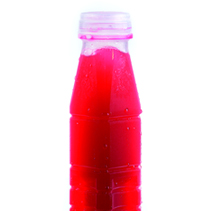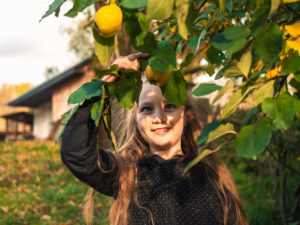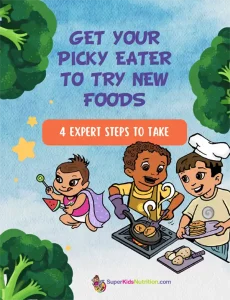
Sweetened Drinks Contain Harmful Ingredients
There is a lot of talk about the evils of high fructose corn syrup (HFCS). It is a sweetener found in almost all processed foods. It is not much different from sugar: HFCS is 55% fructose and 45% glucose; sugar is 50% fructose and 50% glucose. The concern about too much fructose is that our bodies do not treat it like glucose. Insulin is released when we eat glucose, and this sends a message to our brain that we are full. Fructose does not cause the release of insulin and this may lead to over-eating. Our bodies also make fat more easily with fructose than with glucose, and this is why diets high in sugar are associated with higher levels of triglycerides (fat) circulating in the blood. The fructose in HFCS and sugar are equally damaging, and most of the fructose in our diets comes from sweetened beverages.
Liquid Calories Don’t Help You Feel Satisfied
Drinking your calories this way does not make you feel full, so you don’t eat less. People who eat or drink more sugar are prone to gain weight and have increased risk of heart disease. Many people have switched to artificially sweetened (diet) beverages which contain either acesulfame-k, aspartame or sucralose. The reason these artificial sweeteners have zero calories is that they are not absorbed by the body. The FDA has approved these sweeteners as being safe, but some organizations are concerned about their use. Drinking diet soda may get people accustomed to the concentrated sweetness and they may lose their taste for less sweet fruits and vegetables. The Center for Science in the Public Interest (a consumer advocacy organization) considers sucralose (Splenda) to be the only safe artificial sweetener. The American Acadamy of Pediatrics feels that artificial sweeteners have not been adequately studied to determine if they are safe for children, so they recommend limiting their use. So, what should your child be drinking?
Healthy Beverage Choices Include:
- Water or mineral water
- Use fruit juice as a flavoring in water (1 ounce of 100% fruit juice in 2 to 3 ounces of water). If your child is accustomed to sweet beverages, make these changes gradually. (Start with 75% juice and 25% water, then gradually decrease the amount of juice.)
- Limit 100% fruit juice to 4 to 6 ounces per day for children 1 to 6 years of age and 8 to 12 ounces per day for children 7 to 18 years of age. Fruit juice should not be given to babies under 6 months of age (8).
- Put slices of oranges, lemons, and limes in a pitcher of water to give it a refreshing citrus flavor. Check out these refreshing ways to give your water a flavor boost!
- Look for naturally flavored bottled water that does not contain artificial sweeteners (example: Hint brand water)
- Limit your child’s intake of “diet” or “light” beverages, because they contain artificial sweeteners
Test Your Knowledge?
Which of the following statements about fructose is true?
- High-fructose corn syrup contains fructose, but sugar does not
- Fructose is found in almost equal amounts in high-fructose corn syrup and sugar
- Fructose and glucose are treated the same way by our bodies
Answer: b
Which is the largest source of fructose in our diets?
- Sweetened beverages
- Fruit
- Candy
Answer: a









